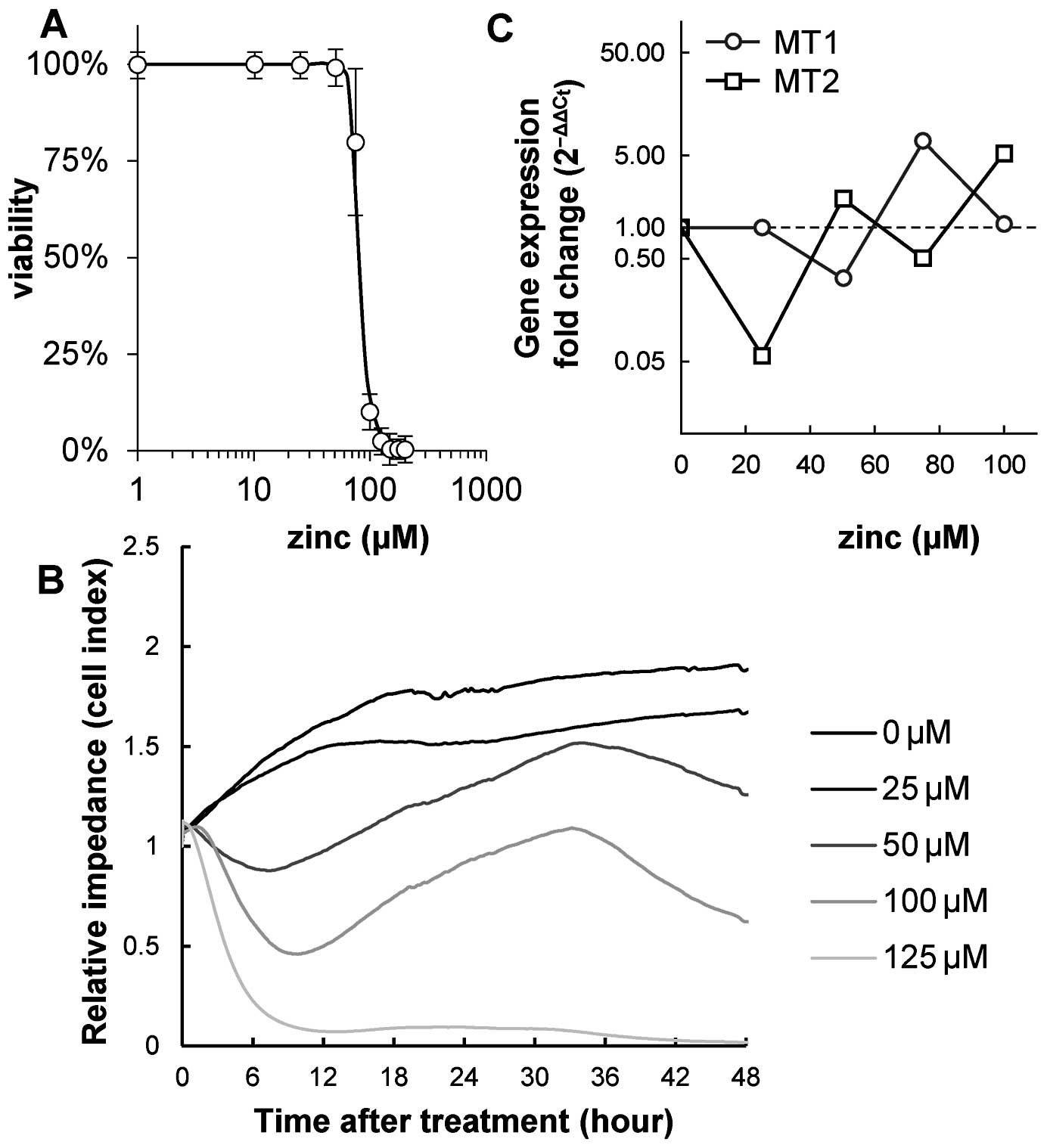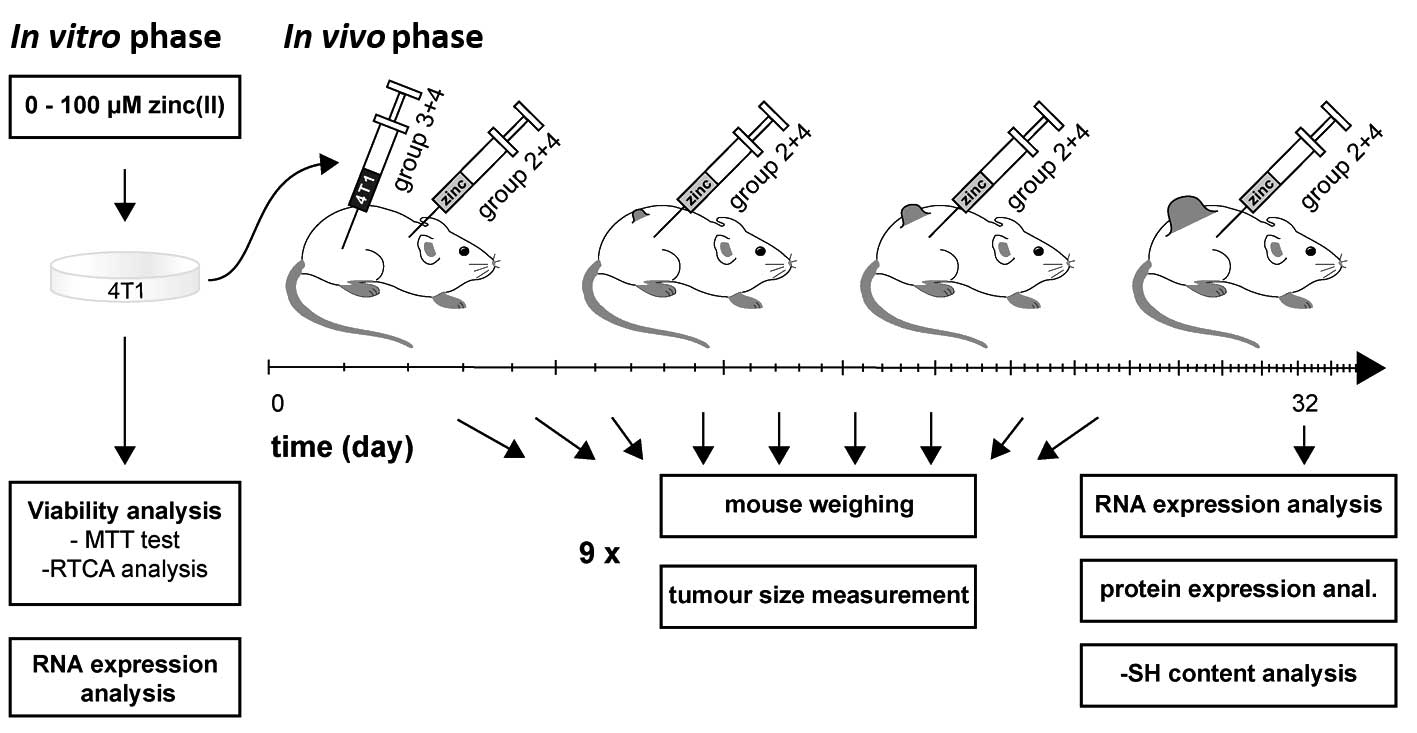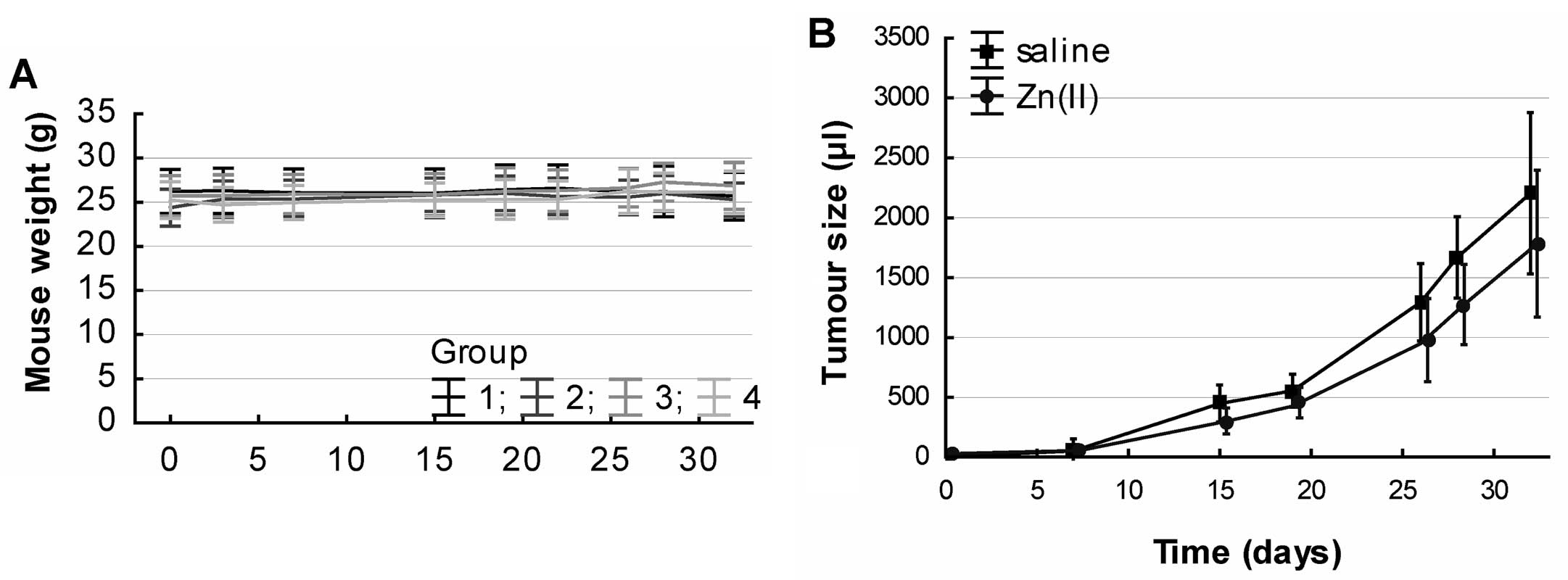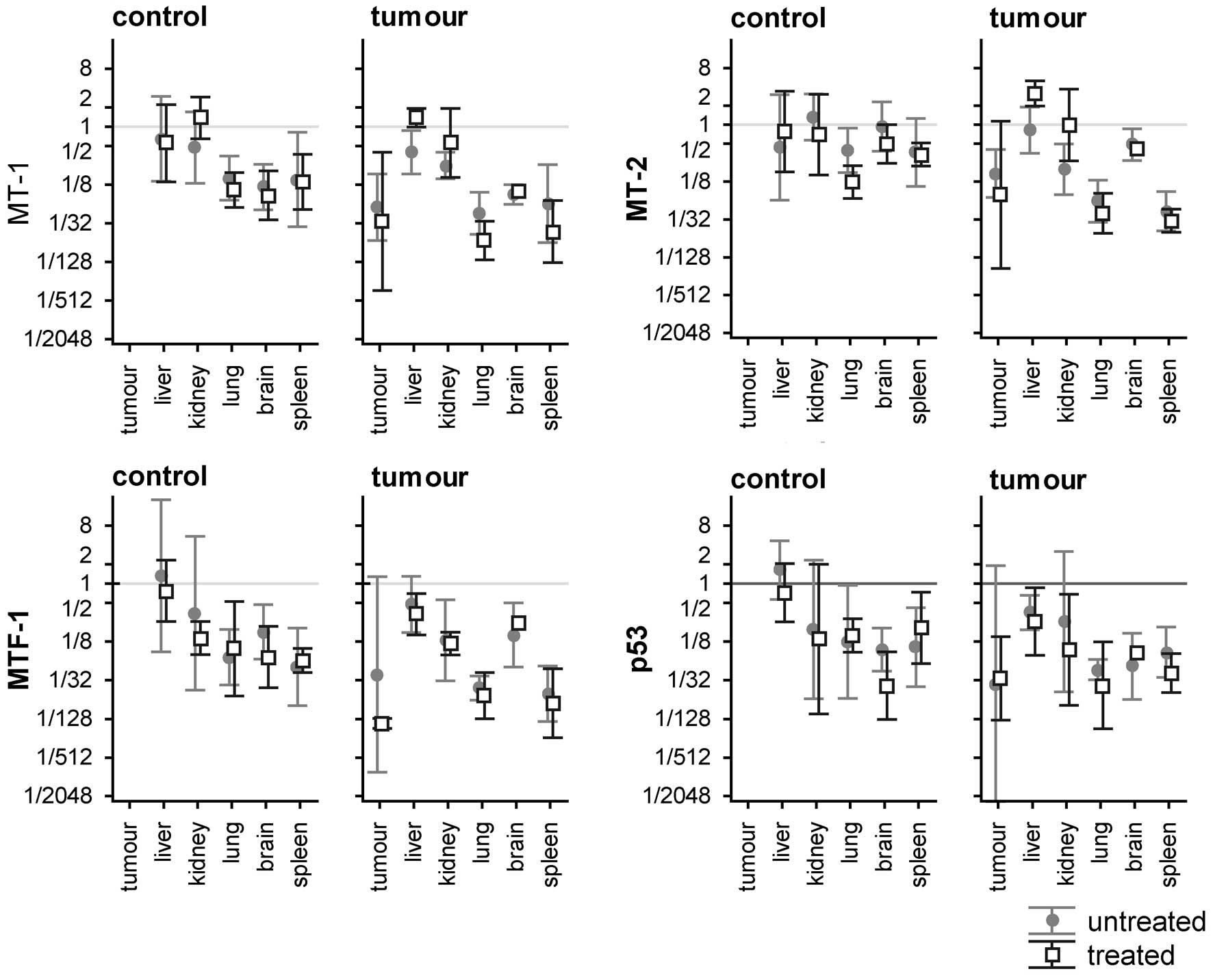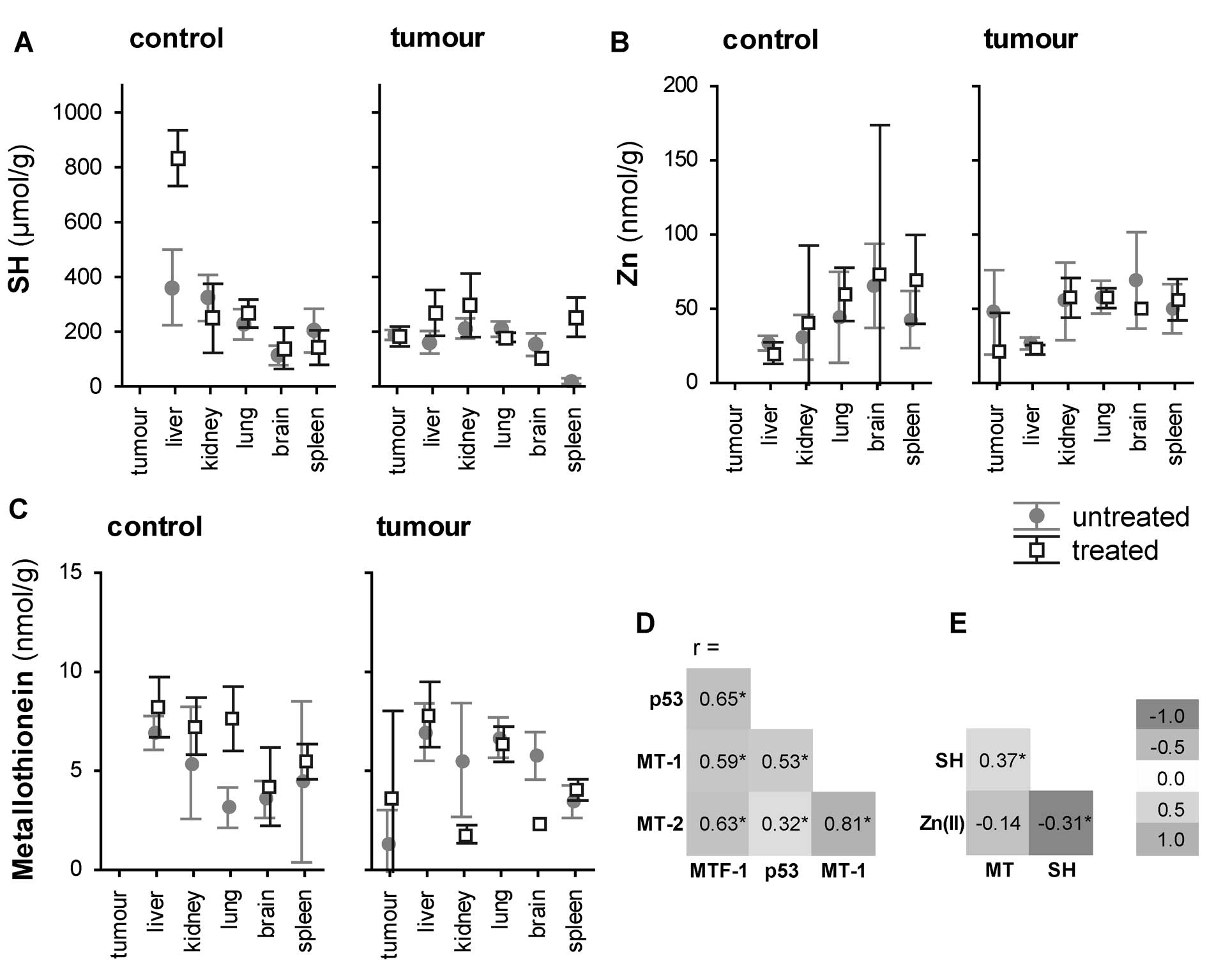|
1
|
Giacinti L, Claudio PP, Lopez M and
Giordano A: Epigenetic information and estrogen receptor alpha
expression in breast cancer. Oncologist. 11:1–8. 2006. View Article : Google Scholar : PubMed/NCBI
|
|
2
|
Yerlikaya A, Okur E and Ulukaya E: The
p53-independent induction of apoptosis in breast cancer cells in
response to proteasome inhibitor bortezomib. Tumor Biol.
33:1385–1392. 2012. View Article : Google Scholar
|
|
3
|
Ford CE, Ekstrom EJ and Andersson T:
Wnt-5a signaling restores tamoxifen sensitivity in estrogen
receptor-negative breast cancer cells (Retracted Article. See vol
107, pg 22360, 2010). Proc Natl Acad Sci USA. 106:3919–3924. 2009.
View Article : Google Scholar
|
|
4
|
Miller FR, Miller BE and Heppner GH:
Characterization of metastatic heterogeneity among subpopulations
of a single-mouse mammary-tumor: heterogeneity in phenotypic
stability. Invasion Metastasis. 3:22–31. 1983.
|
|
5
|
Tao K, Fang M, Alroy J and Sahagian GG:
Imagable 4T1 model for the study of late stage breast cancer. BMC
Cancer. 8:2282008. View Article : Google Scholar : PubMed/NCBI
|
|
6
|
Aslakson CJ and Miller FR: Selective
events in the metastatic process defined by analysis of the
sequential dissemination of subpopulations of a mouse
mammary-tumor. Cancer Res. 52:1399–1405. 1992.PubMed/NCBI
|
|
7
|
Cui Y, Vogt S, Olson N, Glass AG and Rohan
TE: Levels of zinc, selenium, calcium, and iron in benign breast
tissue and risk of subsequent breast cancer. Cancer Epidemiol
Biomark Prev. 16:1682–1685. 2007. View Article : Google Scholar
|
|
8
|
Grattan BJ and Freake HC: Zinc and cancer:
implications for LIV-1 in breast cancer. Nutrients. 4:648–675.
2012. View Article : Google Scholar : PubMed/NCBI
|
|
9
|
Chasapis CT, Loutsidou AC, Spiliopoulou CA
and Stefanidou ME: Zinc and human health: an update. Arch Toxicol.
86:521–534. 2012. View Article : Google Scholar
|
|
10
|
Liuzzi JP and Cousins RJ: Mammalian zinc
transporters. Annu Rev Nutr. 24:151–172. 2004. View Article : Google Scholar : PubMed/NCBI
|
|
11
|
Lee R, Woo W, Wu B, Kummer A, Duminy H and
Xu Z: Zinc accumulation in N-methyl-N-nitrosourea-induced rat
mammary tumors is accompanied by an altered expression of ZnT-1 and
metallothionein. Exp Biol Med. 228:689–696. 2003.
|
|
12
|
Taylor KM, Morgan HE, Johnson A, Hadley LJ
and Nicholson RI: Structure-function analysis of LIV-1, the breast
cancer-associated protein that belongs to a new subfamily of zinc
transporters. Biochem J. 375:51–59. 2003. View Article : Google Scholar : PubMed/NCBI
|
|
13
|
Kagara N, Tanaka N, Noguchi S and Hirano
T: Zinc and its transporter ZIP10 are involved in invasive behavior
of breast cancer cells. Cancer Sci. 98:692–697. 2007. View Article : Google Scholar : PubMed/NCBI
|
|
14
|
Taylor KM, Vichova P, Jordan N, Hiscox S,
Hendley R and Nicholson RI: ZIP7-mediated intracellular zinc
transport contributes to aberrant growth factor signaling in
antihormone-resistant breast cancer cells. Endocrinology.
149:4912–4920. 2008. View Article : Google Scholar : PubMed/NCBI
|
|
15
|
Maret W: Zinc coordination environments in
proteins as redox sensors and signal transducers. Antioxid Redox
Signal. 8:1419–1441. 2006. View Article : Google Scholar : PubMed/NCBI
|
|
16
|
Gumulec J, Masarik M, Krizkova S, et al:
Insight to physiology and pathology of zinc(II) ions and their
actions in breast and prostate carcinoma. Curr Med Chem.
18:5041–5051. 2011. View Article : Google Scholar : PubMed/NCBI
|
|
17
|
Gumulec J, Masarik M, Adam V, Eckschlager
T, Provaznik I and Kizek R: Serum and tissue zinc in epithelial
malignancies: a meta-analysis. PLoS One. 9:e997902014. View Article : Google Scholar : PubMed/NCBI
|
|
18
|
Gumulec J, Raudenska M, Adam V, Kizek R
and Masarik M: Metallothionein - immunohistochemical cancer
biomarker: a meta-analysis. PLoS One. 9:e853462014. View Article : Google Scholar : PubMed/NCBI
|
|
19
|
Holubova M, Axmanova M, Gumulec J, et al:
KRAS NF-kappa B is involved in the development of zinc resistance
and reduced curability in prostate cancer. Metallomics.
6:1240–1253. 2014. View Article : Google Scholar : PubMed/NCBI
|
|
20
|
Ruttkay-Nedecky B, Nejdl L, Gumulec J, et
al: The role of metallothionein in oxidative stress. Int J Mol Sci.
14:6044–6066. 2013. View Article : Google Scholar : PubMed/NCBI
|
|
21
|
Sato M and Bremner I: Oxygen free-radicals
and metallothionein. Free Radic Biol Med. 14:325–337. 1993.
View Article : Google Scholar : PubMed/NCBI
|
|
22
|
Masarik M, Gumulec J, Hlavna M, et al:
Analysis of metallothionein and glutathione in prostate cells as
markers of oxidative stress. Int J Mol Med. 30:S46. 2012.
|
|
23
|
Aschner M, Conklin DR, Yao CP, Allen JW
and Tan KH: Induction of astrocyte metallothioneins (MTs) by zinc
confers resistance against the acute cytotoxic effects of
methylmercury on cell swelling, Na+ uptake, and
K+ release. Brain Res. 813:254–261. 1998. View Article : Google Scholar : PubMed/NCBI
|
|
24
|
Cai L and Cherian MG: Zinc-metallothionein
protects from DNA damage induced by radiation better than
glutathione and copper- or cadmium-metallothioneins. Toxicol Lett.
136:193–198. 2003. View Article : Google Scholar
|
|
25
|
Min KS, Nishida K and Onosaka S:
Protective effect of metallothionein to ras DNA damage induced by
hydrogen peroxide and ferric ion-nitrilotriacetic acid. Chem Biol
Interact. 122:137–152. 1999. View Article : Google Scholar
|
|
26
|
Takahashi S: Molecular functions of
metallothionein and its role in hematological malignancies. J
Hematol Oncol. 5:412012. View Article : Google Scholar : PubMed/NCBI
|
|
27
|
Otsuka F, Iwamatsu A, Suzuki K, Ohsawa M,
Hamer DH and Koizumi S: Purification and characterization of a
protein that binds to metal-responsive elements of the human
metallothionein II(a) gene. J Biol Chem. 269:23700–23707.
1994.PubMed/NCBI
|
|
28
|
Smirnova IV, Bittel DC, Ravindra R, Jiang
HM and Andrews GK: Zinc and cadmium can promote rapid nuclear
translocation of metal response element-binding transcription
factor-1. J Biol Chem. 275:9377–9384. 2000. View Article : Google Scholar : PubMed/NCBI
|
|
29
|
Fan LZ and Cherian MG: Potential role of
p53 on metallothionein induction in human epithelial breast cancer
cells. Br J Cancer. 87:1019–1026. 2002. View Article : Google Scholar : PubMed/NCBI
|
|
30
|
Ostrakhovitch EA, Olsson PE, von Hofsten J
and Cherian MG: P53 mediated regulation of metallothionen
transcription in breast cancer cells. J Cell Biochem.
102:1571–1583. 2007. View Article : Google Scholar : PubMed/NCBI
|
|
31
|
Fan S, Smith ML, Rivet DJ, et al:
Disruption of p53 function sensitizes breast-cancer MCF-7 cells to
cisplatin and pentoxifylline. Cancer Res. 55:1649–1654.
1995.PubMed/NCBI
|
|
32
|
Woo W and Xu ZM: Body zinc distribution
profile during N-methyl-N-nitrosourea-induced mammary tumorigenesis
in rats at various levels of dietary zinc intake. Biol Trace Elem
Res. 87:157–169. 2002. View Article : Google Scholar : PubMed/NCBI
|
|
33
|
Masarik M, Gumulec J, Hlavna M, et al:
Monitoring of the prostate tumour cells redox state and real-time
proliferation by novel biophysical techniques and fluorescent
staining. Integr Biol. 4:672–684. 2012. View Article : Google Scholar
|
|
34
|
Domingo JL, Llobet JM, Paternain JL and
Corbella J: Acute zinc intoxication - comparison of the antidotal
efficacy of several chelating-agents. Vet Hum Toxicol. 30:224–228.
1988.PubMed/NCBI
|
|
35
|
Kotoh T, Dhar DK, Masunaga R, et al:
Antiangiogenic therapy of human esophageal cancers with thalidomide
in nude mice. Surgery. 125:536–544. 1999. View Article : Google Scholar : PubMed/NCBI
|
|
36
|
Xanthopoulos JM, Romano AE and Majumdar
SK: Response of mouse breast cancer cells to anastrozole,
tamoxifen, and the combination. J Biomed Biotechnol. 2005:10–19.
2005. View Article : Google Scholar : PubMed/NCBI
|
|
37
|
Kizek R, Trnkova L and Palecek E:
Determination of metallothionein at the femtomole level by constant
current stripping chronopotentiometry. Anal Chem. 73:4801–4807.
2001. View Article : Google Scholar : PubMed/NCBI
|
|
38
|
Ellman GL: Tissue sulfhydryl groups. Arch
Biochem Biophys. 82:70–77. 1959. View Article : Google Scholar : PubMed/NCBI
|
|
39
|
Franklin RB and Costello LC: Zinc as an
anti-tumor agent in prostate cancer and in other cancers. Arch
Biochem Biophys. 463:211–217. 2007. View Article : Google Scholar : PubMed/NCBI
|
|
40
|
Hou G, Dick R, Zeng C and Brewer GJ:
Comparison of lowering copper levels with tetrathiomolybdate and
zinc on mouse tumor and doxorubicin models. Transl Res.
148:309–314. 2006. View Article : Google Scholar : PubMed/NCBI
|
|
41
|
Silva MP, Silva DM, Conceicao ALC,
Ribeiro-Silva A and Poletti ME: Role of Ca, Fe, Cu and Zn in breast
cancer: study by X-ray fluorescence techniques and
immunohistochemical analysis. X-Ray Spectrom. 42:303–311. 2013.
View Article : Google Scholar
|
|
42
|
Nakshatri H, BhatNakshatri P, Martin DA,
Goulet RJ and Sledge GW: Constitutive activation of NF-kappa B
during progression of breast cancer to hormone-independent growth.
Mol Cell Biol. 17:3629–3639. 1997.PubMed/NCBI
|
|
43
|
Uzzo RG, Leavis P, Hatch W, et al: Zinc
inhibits nuclear factor-kappa B activation and sensitizes prostate
cancer cells to cytotoxic agents. Clin Cancer Res. 8:3579–3583.
2002.PubMed/NCBI
|
|
44
|
Franklin RB and Costello LC: The important
role of the apoptotic effects of zinc in the development of
cancers. J Cell Biochem. 106:750–757. 2009. View Article : Google Scholar : PubMed/NCBI
|
|
45
|
Feng P, Li TL, Guan ZX, Franklin RB and
Costello LC: Direct effect of zinc on mitochondrial apoptogenesis
in prostate cells. Prostate. 52:311–318. 2002. View Article : Google Scholar : PubMed/NCBI
|
|
46
|
Jones PA and Laird PW: Cancer epigenetics
comes of age. Nat Genet. 21:163–167. 1999. View Article : Google Scholar : PubMed/NCBI
|
|
47
|
Ushijima T and Okochi-Takada E: Aberrant
methylations in cancer cells: where do they come from? Cancer Sci.
96:206–211. 2005. View Article : Google Scholar : PubMed/NCBI
|
|
48
|
Wallwork JC and Duerre JA: Effect of
zinc-deficiency on methionine metabolism, methylation reactions and
protein-synthesis in isolated perfused rat-liver. J Nutr.
115:252–262. 1985.PubMed/NCBI
|
|
49
|
Marks PA and Xu WS: Histone deacetylase
inhibitors: potential in cancer therapy. J Cell Biochem.
107:600–608. 2009. View Article : Google Scholar : PubMed/NCBI
|
|
50
|
Finnin MS, Donigian JR and Pavletich NP:
Structure of the histone deacetylase SIRT2. Nat Struct Biol.
8:621–625. 2001. View
Article : Google Scholar : PubMed/NCBI
|
|
51
|
Somoza JR, Skene RJ, Katz BA, et al:
Structural snapshots of human HDAC8 provide insights into the class
I histone deacetylases. Structure. 12:1325–1334. 2004. View Article : Google Scholar
|
|
52
|
Fatemi M, Hermann A, Pradhan S and Jeltsch
A: The activity of the murine DNA methyltransferase Dnmt1 is
controlled by interaction of the catalytic domain with the
N-terminal part of the enzyme leading to an allosteric activation
of the enzyme after binding to methylated DNA. J Mol Biol.
309:1189–1199. 2001. View Article : Google Scholar : PubMed/NCBI
|
|
53
|
Zhou Q, Atadja P and Davidson NE: Histone
deacetylase inhibitor LBH589 reactivates silenced estrogen receptor
alpha (ER) gene expression without loss of DNA hypermethylation.
Cancer Biol Ther. 6:64–69. 2007. View Article : Google Scholar
|
|
54
|
Shimizu M, Hochadel JF, Fulmer BA and
Waalkes MP: Effect of glutathione depletion and metallothionein
gene expression on arsenic-induced cytotoxicity and c-myc
expression in vitro. Toxicol Sci. 45:204–211. 1998.PubMed/NCBI
|
|
55
|
Feng JF, Lu L, Zeng P, et al: Serum total
oxidant/antioxidant status and trace element levels in breast
cancer patients. Int J Clin Oncol. 17:575–583. 2012. View Article : Google Scholar
|
|
56
|
Kasapovic J, Pejic S, Todorovic A,
Stojiljkovic V and Pajovic SB: Antioxidant status and lipid
peroxidation in the blood of breast cancer patients of different
ages. Cell Biochem Funct. 26:723–730. 2008. View Article : Google Scholar : PubMed/NCBI
|
|
57
|
Al-Qubaisi MS, Rasedee A, Flaifel MH, et
al: Cytotoxicity of nickel zinc ferrite nanoparticles on cancer
cells of epithelial origin. Int J Nanomed. 8:2497–2508. 2013.
View Article : Google Scholar
|
|
58
|
Skrajnowska D, Bobrowska B, Tokarz A,
Kuras M, Rybicki P and Wachowicz M: The Effect of Zinc- and copper
sulphate supplementation on tumor and hair concentrations of trace
elements (Zn, Cu, Fe, Ca, Mg, P) in rats with DMBA-induced breast
bancer. Pol J Environ Stud. 20:1585–1592. 2011.
|
|
59
|
Mills BJ, Broghamer WL, Higgins PJ and
Lindeman RD: Inhibition of tumor-growth by zinc depletion of rats.
J Nutr. 114:746–752. 1984.PubMed/NCBI
|
|
60
|
Pories WJ, DeWys WD, Flynn A, Mansour EG
and Strain WH: Implications of the inhibition of animal tumors by
dietary zinc deficiency. Adv Exp Med Biol. 91:243–257. 1977.
View Article : Google Scholar : PubMed/NCBI
|
|
61
|
Dewys W, Pories WJ, Richter MC and Strain
WH: Inhibition of Walker 256 carcinosarcoma growth by dietary zinc
deficiency. Proc Soc Exp Biol Med. 135:17–22. 1970. View Article : Google Scholar : PubMed/NCBI
|
|
62
|
McQuitty JT, Dewys WD, Monaco L, et al:
Inhibition of tumor growth by dietary zinc deficiency. Cancer Res.
30:1387–1390. 1970.PubMed/NCBI
|
|
63
|
Tang DG and Honn KV: Apoptosis of W256
carcinosarcoma cells of the monocytoid origin induced by NDGA
involves lipid peroxidation and depletion of GSH: role of
12-lipoxygenase in regulating tumor cell survival. J Cell Physiol.
172:155–170. 1997. View Article : Google Scholar : PubMed/NCBI
|
|
64
|
Gardner HA, Kellen JA, Wong AHC, Szalai JP
and Katic M: Characterization of different cell subpopulations
derived from an experimental tumor-model. Cancer Invest. 6:161–165.
1988. View Article : Google Scholar
|
|
65
|
Costlow ME, Buschow RA and McGuire WL:
Prolactin receptors in an estrogen receptor-deficient
mammary-carcinoma. Science. 184:85–86. 1974. View Article : Google Scholar : PubMed/NCBI
|
|
66
|
Kau P, Nagaraja GM, Zheng H, et al: A
mouse model for triple-negative breast cancer tumor-initiating
cells (TNBC-TICs) exhibits similar aggressive phenotype to the
human disease. BMC Cancer. 12:1202012. View Article : Google Scholar
|
|
67
|
Drasin DJ, Robin TP and Ford HL: Breast
cancer epithelial-to-mesenchymal transition: examining the
functional consequences of plasticity. Breast Cancer Res.
13:2262011. View Article : Google Scholar : PubMed/NCBI
|
|
68
|
Pulaski BA and Ostrand-Rosenberg S: Mouse
4T1 breast tumor model. Curr Protoc Immunol. Chapter 20(Unit 20):
22001.
|
|
69
|
Ames BN: Micronutrients prevent cancer and
delay aging. Toxicol Lett. 103:5–18. 1998. View Article : Google Scholar
|
|
70
|
Ho E: Zinc deficiency, DNA damage and
cancer risk. J Nutr Biochem. 15:572–578. 2004. View Article : Google Scholar : PubMed/NCBI
|



